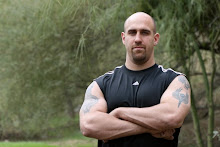Ooops, I said the "c" word. Yep, I said CORE, don't start throwing stones or rolling eyes quite yet. Yes, I am tired of hearing about the core about as much as anyone. There is so much overhype surrounding this topic, but some of it is actually legit.
It seemed that our industry has gone to too far extremes with the core subject. When it first gained momentum core training was associated as getting away from machine based exercises and getting onto all types of unstable pieces of equipment. This was definitely mainstream for some time and most of us gave it a shot. Heck, with my back issues I was looking for anything that could bring me back to a level of no pain and capable of being in my best physical condition. However, it didn't take long for many of us to figure out while conceptually these ideas sounded good, they just didn't pan out for those not in rehab.
This spawned a complete rejection of core training and the push for the idea of all core training was accomplished in the big lifts (i.e. squat, deadlifts, overhead pressing) came into vogue. The truth is these lifts do take a tremendous amount of core strength. Unfortunately, very few people are truly proficient lifters and have immense weakness in their trunk because they didn't have these exercises in their programs for most of their training career. In addition, many of the old-time strongmen that many of us reference had a large background in gymnastics, wrestling, and manual labor that help build that tremendous core strength.
Core training can be complex because the core is complex. It isn't just about your abdominals, it is about the low back and hips, it is about large superficial muscles and small stabilizer muscles. It is about not just producing movement, but resisting movement as well. It is not about moving just slowly, but explosively as well. Whew! See, core training may be much more than we often give it credit.
I've always felt as though sandbags were a very helpful tool in developing a great core because you could accomplish many of these goals. Holding a sandbag requires both superficial and stabilizer muscles to fire to great levels both to resist movement and maintain postural alignment. You can also create many movements that help teach force production through the core that decreases injury and you can train in ranges of motions and movement patterns that are hard to reproduce with most other training tools.
Allan Hedrick, Strength Coach for the Air Force Academy, wrote in the NSCA journal about unstable objects..
“But, applying the concept of specificity, it makes sense that training with a fluid resistance is a more sport-specific method of training as compared to lifting exclusively with a static resistance, because in most situations, athletes encounter a dynamic resistance (in the form of an opponent) as compared to the static resistance. Further, because the active fluid resistance enhances the need for stability and control, this type of training may reduce the opportunity for injury because of improved joint stability.” (NSCA Journal, Vol.25 Number 4)
While Coach Hedrick was speaking spefically about kegs, we can infer that sandbags would fit this criteria as well. This type of training may also be what biomechanics expert, Dr. Michael Yessis was referring to in his book, Secrets of Soviet Sports Training, when he mentioned to prevent injury we need to train in extreme ranges of motion. With sandbags and the drills in these videos you can see how we utilize sandbags to accomplish these goals.
I want to put forth my first video on this subject matter as it is important to master these drills first.
Got those drills down, then see the next generation of sandbag core drills...
Subscribe to:
Post Comments (Atom)




No comments:
Post a Comment